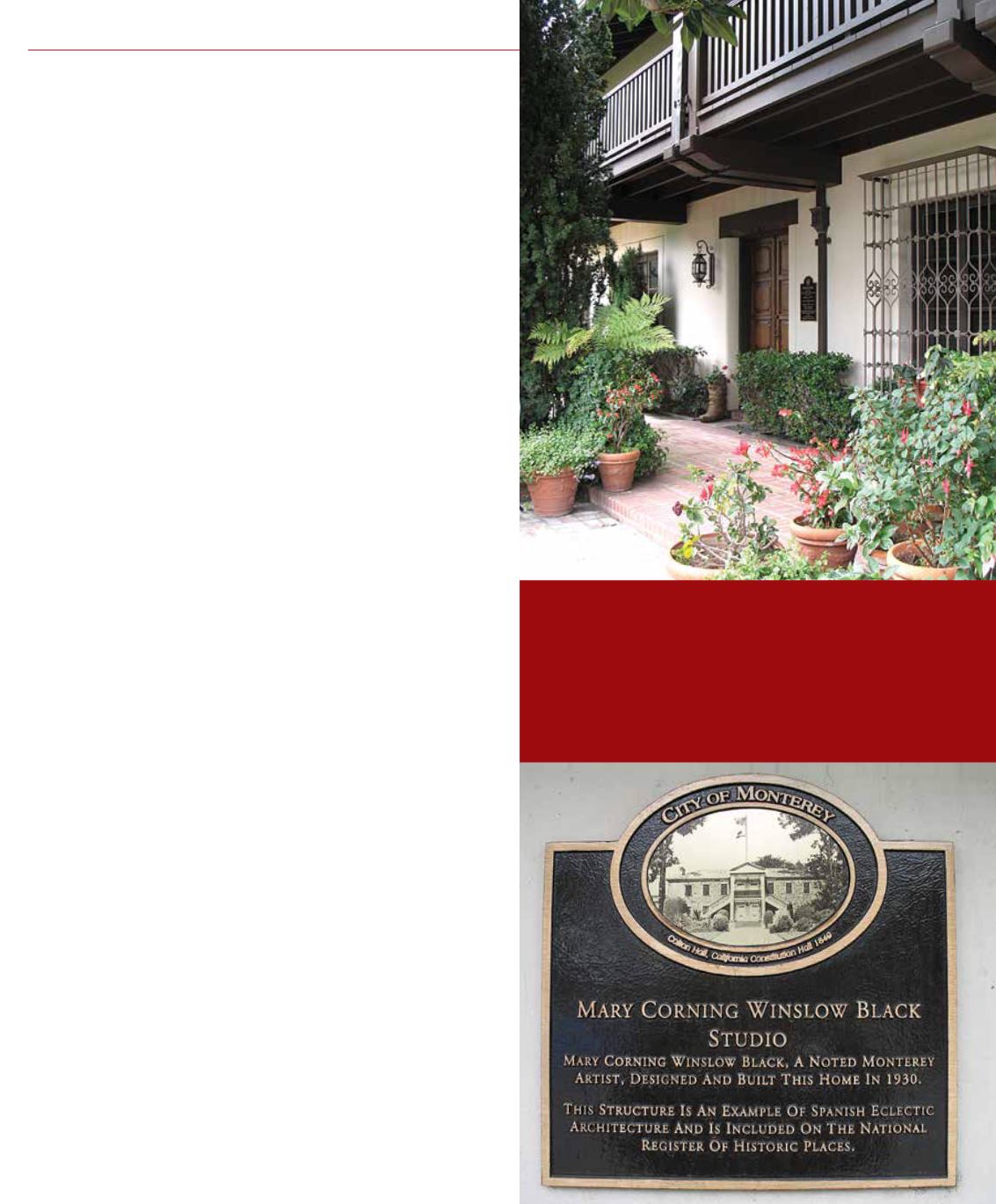
64
winter
|
spring
Wendt spent several weeks at
El Cerrito,
creating sketches for the Pan
American Exposition. During his stay, Black held a reception for Wendt
inviting such local artists as Alexander F. Harmer, Edwin W. Gledhill,
Clarence Mattei, and Lockwood de Forest.
As a patron of the California Art Club, Clarence sponsored three
prizes in 1916. Locally, he purchased the Covarrubias adobe at 715
Santa Barbara Street as a clubhouse/art studio for local artists. Art
classes were held there until the building was sold to John Southworth.
Black was a trustee of and major contributor to the public library
and wanted to add an art wing to it. In 1917, he purchased the land
between the library and then-post office (now Santa Barbara Museum
of Art) and donated it to the library for the purpose of creating an art
museum. That dream was fulfilled posthumously when the Faulkner
Gallery was completed in 1930.
In 1919, there was a revival of interest in community pageantry.
Clarence and Mary joined with the Frederick Forrest Peabodys,
Albert and Adele Herter, the David Grays, and Pearl Chase to create
the Community Arts Association for the purpose of producing “La
Primavera” and “The Quest.” Though the group disbanded after
the last pageant, another group, using the same name, formed and
eventually consisted of four branches that included Drama and School
of the Arts. Clarence was vice president of the organization in 1922.
Black was also a director of County National Bank and Trust.
In 1918, he joined Frederick Forrest Peabody, George Owen Knapp,
and C.K.G. Billings in funding the construction of a new, state-of-
the-art laboratory and research facility for Sansum Clinic. After Ruth’s
marriage, the Blacks were often away in Monterey and Tucson, where
Mary found new subjects for her painting. Clarence Black died in
Santa Barbara on February 13, 1924.
MARY IN MONTEREY
I
n 1921, Mary had purchased the historic Casa Abrego, the 1830’s
home of José Abrego in Monterey. The adobe became a second home
and an art studio for her and Clarence.
A year after Clarence died, Mary sold
El Cerrito
and
Black
Forest
and moved to Monterey permanently. Several years after her
mother died in 1926, the elegant Woodcliffe became an amusement
MOGULS
&
MANSIONS
(top) The studio, which Mary Corning Winslow Black
designed next to the Abrego Adobe in Monterey, featured
a cantilever balcony both inside and out; (bottom) Mary’s
studio is both a City of Monterey Historic Landmark and on
the National Register of Historic Places.


